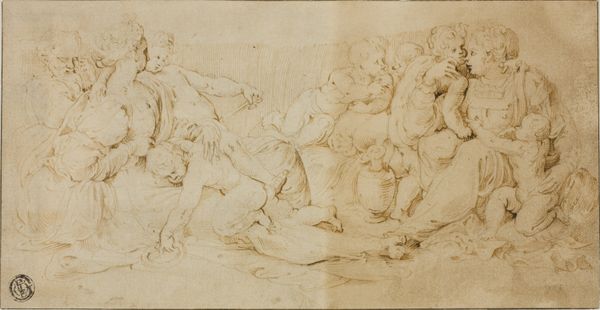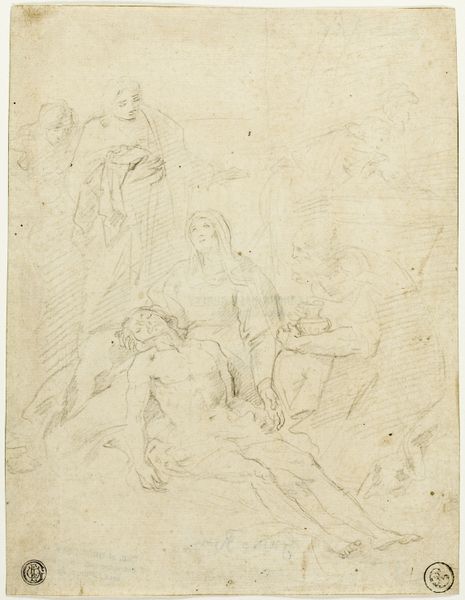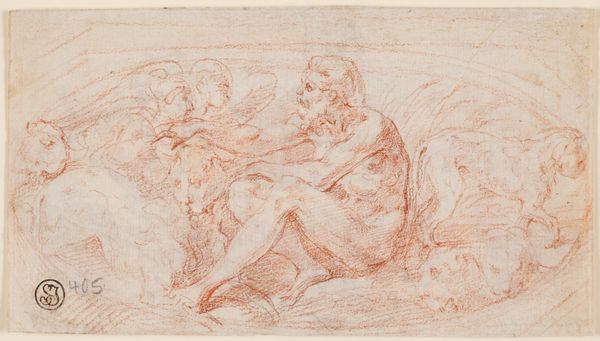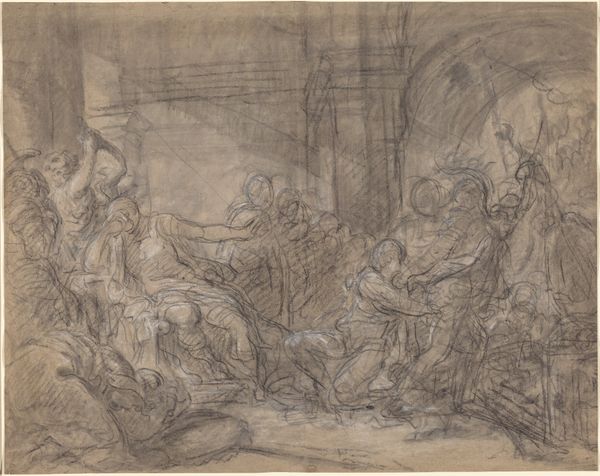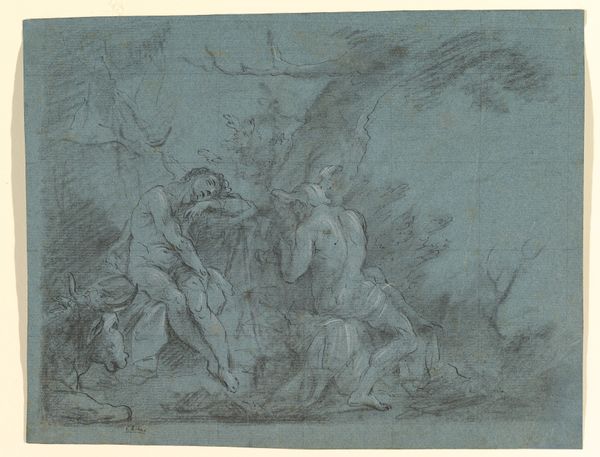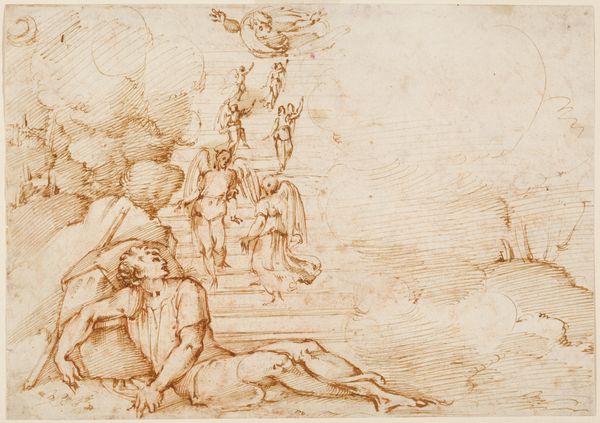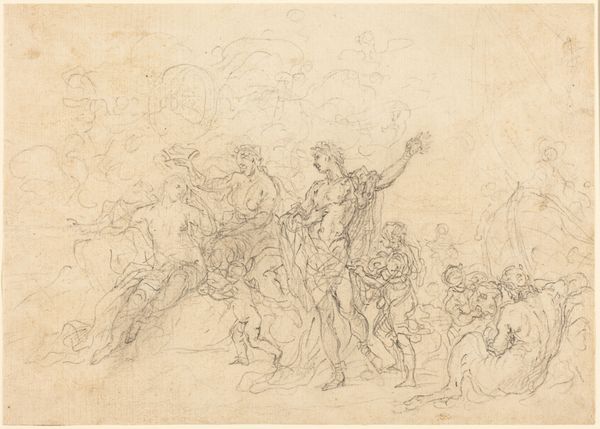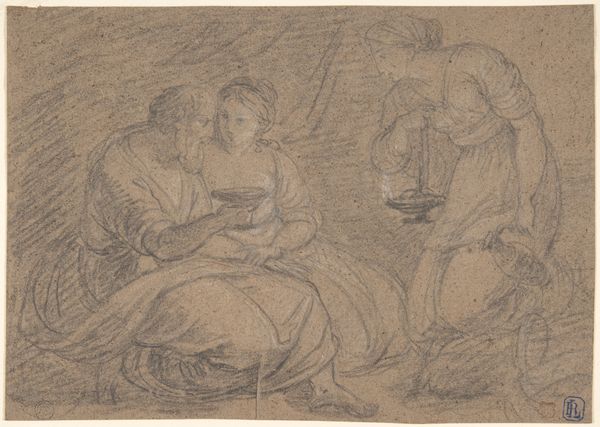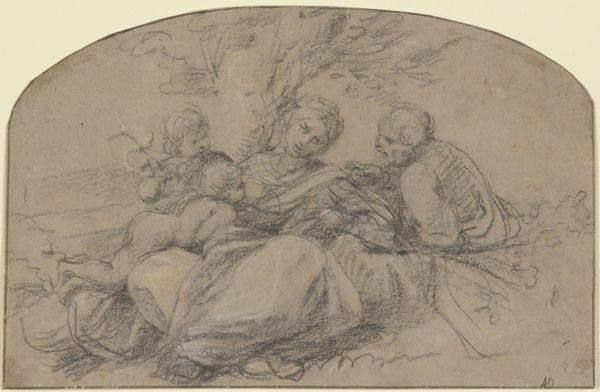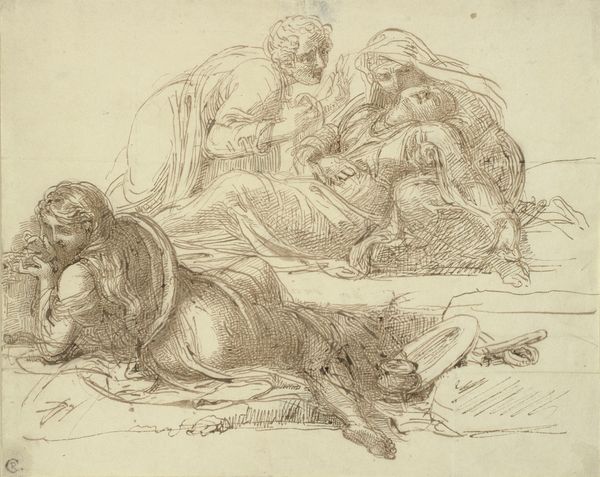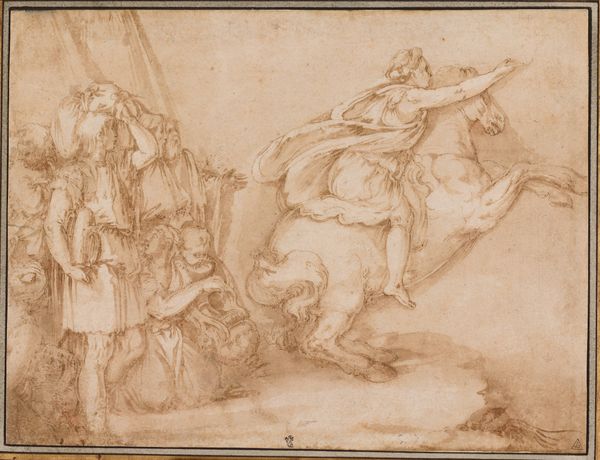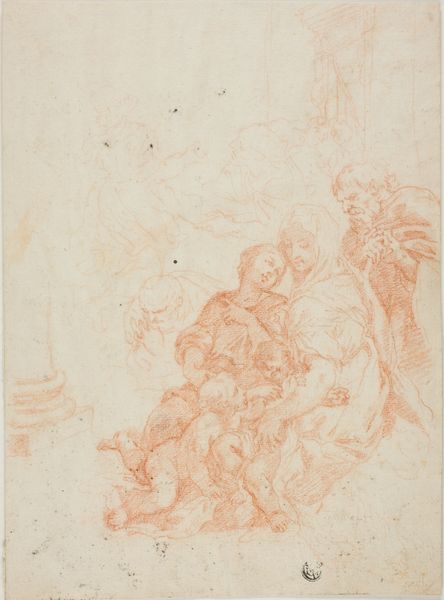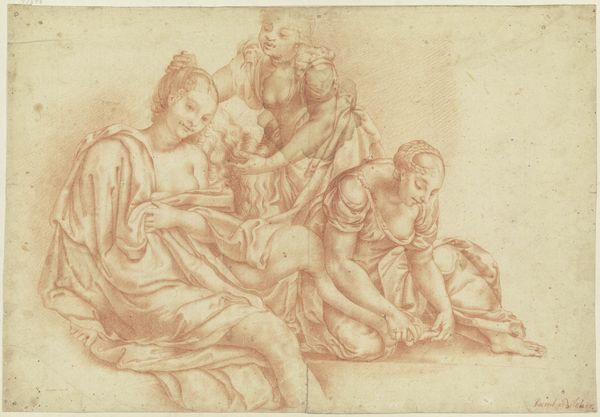
drawing, ink
#
drawing
#
mannerism
#
figuration
#
ink
#
group-portraits
#
erotic-art
Dimensions: 199 mm (height) x 256 mm (width) (bladmaal)
Editor: Here we have Hendrick Goltzius' "Elskende par," created between 1604 and 1607, using ink in a drawing. It’s housed at the SMK in Copenhagen. There's a strong current of intimacy, perhaps even eroticism in this work, amplified by the use of line. What stands out to you, and how would you interpret the scene? Curator: The most potent symbol here lies in the interweaving of bodies, isn’t it? How physical touch becomes a language, an ancient means of transmitting power, desire, and vulnerability across time and cultures. See how Goltzius captures that liminal space between the divine and the corporeal through subtle cues. Notice the studied gesture as she holds what may be a musical text; he, her audience, the other figures perhaps handmaidens...What meaning do you make of this assembly? Editor: I notice the musical text now that you point it out and it reads, to me, like an allusion to harmony – or the possibility of harmony, at least – between the figures and maybe that speaks to some of the conventions around erotic art, broadly. But I still wonder… How would you say cultural memory informs this depiction of love and intimacy? Curator: Well, remember that Goltzius, working within the Mannerist style, looked back to classical ideals while embracing exaggeration and dynamism. The echoes of mythological narratives become deeply felt...think of Venus and Adonis, or Mars and Venus…This image pulls from those wells of meaning. Do you sense how such symbolic weight grants a kind of license to explore sensuality? It’s not *just* about the physical, but a conversation with history and meaning. Editor: I suppose the drawing almost *needs* that history to give its charged, intimate energy meaning. It’s certainly an image I will view differently now. Thank you for opening my eyes to the layered significance in this drawing! Curator: And thank you. It’s enriching to consider the continuous dance between representation, cultural symbolism, and our own human longings for connection.
Comments
No comments
Be the first to comment and join the conversation on the ultimate creative platform.
